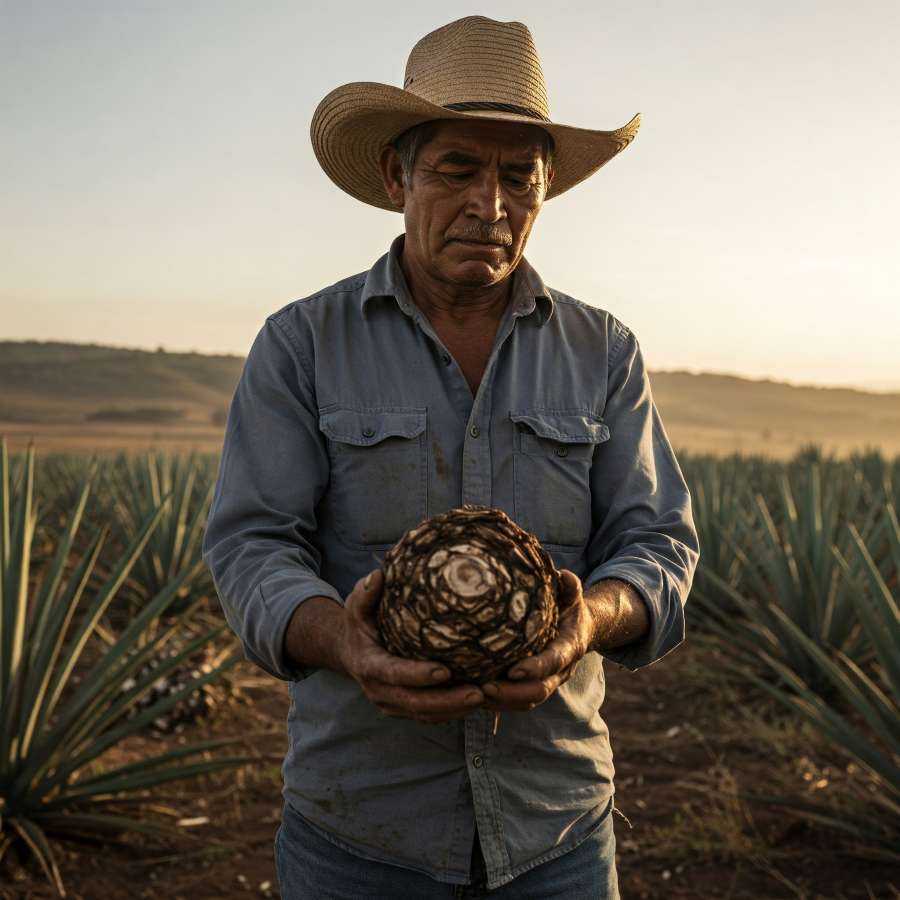Agave Price Crash Forces Mexican Farmers into Mezcal Production
A glut of raw maguey sends prices tumbling 83%, pushing producers in Morelos to bet on distilling the spirit themselves amid market uncertainty.

The fields of Morelos state, long a source of the maguey plant essential for mezcal, are now the scene of an economic crisis for hundreds of farmers. The price for the piña, the pineapple-shaped heart of the agave used to make the smoky spirit, has collapsed—falling from roughly six pesos to a mere one peso per unit, an 83% plunge that threatens the livelihoods of at least 500 producers in this region alone.
Facing a market saturated with raw agave and dwindling demand, farmers are being urged to make a risky but potentially rewarding pivot: stop selling the cheap plant hearts and start distilling their own mezcal.
"There's too much supply and very little demand, and the price of the piña is being cheapened," explains Eduardo Yair González Casales, a 32-year-old producer and president of Route 2 for the federal "Sembrando Vida" (Sowing Life) agricultural support program. Interviewed under the sparse shade of a tree on a hot day, Mr. González, whose family boasts 25 years of experience in agave cultivation, outlined the stark reality and the difficult choices ahead.
The core problem, he detailed, is an imbalance that punishes the primary producer. While mezcal consumption continues to grow globally, the localized market for raw maguey is oversaturated. This forces growers into a difficult position, often selling to intermediaries, known locally as "coyotes," or distilleries at rock-bottom prices.
The proposed solution, championed by Mr. González, involves capturing more of the value chain. "We are working to get resources from both the federal and municipal governments," he said. "Make the recommendation that they don't sell their maguey piña, that they transform it into mezcal. And if they can't sell it [immediately], let it age; the price doesn't go down, on the contrary." Processing the agave themselves, especially into aged mezcal which commands higher prices due to its complex flavor profile, is seen as the most viable alternative. "Because the piña decomposes and the mezcal becomes tastier, then, if you have the means to process it, much better," he argued.
However, this transition from farming to distilling is fraught with challenges. A significant portion of the region's agave cultivation, covering approximately 3,000 hectares across municipalities like Puente de Ixtla, Tlaquiltenango, Xoxocotla, and Ayala under Mr. González's Route 2 purview, is relatively young. Much of it stems from the "Sembrando Vida" program, meaning the plants require several more years to mature – typically four to five years before harvest is feasible.
Current raw production potential is estimated between 8 million and 12 million liters annually, but Mr. González expressed confidence that "next year we could produce 30 to 50 million liters." This future potential clashes with present needs and the significant lag time before these younger plants yield marketable mezcal.
Furthermore, market access remains a critical hurdle, especially for small-scale or new producers entering the complex world of spirits production and sales. "The uncertainty is that we don't have a guaranteed market," Mr. González acknowledged candidly. "We have... mistrust... especially for the new or small producers."
Mr. González, who began working in his family's agave project in his teens and now oversees significant planting on roughly 25 hectares, is acutely aware of the need for structure and support. He mentioned plans are underway to establish a collective brand within the next two years. "We are working so that in two years at the latest, they can get a brand that represents all the producers, to be able to open a route or market that helps them sell their product," he stated.
The focus is on leveraging the region's artisanal heritage. Mr. González invited consumers to seek out mezcal from local craft producers in communities like Tilzapotla, Xochipala, Ajuchitlán, Huaxtla, and Chimalacatlán, emphasizing that "artisanal mezcal has its typical flavor, whose quality competes at a national level."
A recent achievement offers a glimmer of hope and validation: a mezcal presented by producers from the region recently secured third place in a competition held in the neighboring state of Michoacán, widely regarded as a powerhouse of mezcal production. "I commented that they should present it as it is... and they brought back third place from Michoacán, being mezcal territory!" Mr. González recounted with pride.
For the maguey farmers of Morelos, the collapse in piña prices presents an inflection point. The path forward requires navigating volatile commodity prices, investing in new distillation capabilities, mastering the complexities of branding and market access, and betting that the global appetite for authentic, artisanal mezcal can ultimately sustain their shift from cultivators to distillers. It's a high-stakes wager born from economic necessity.




